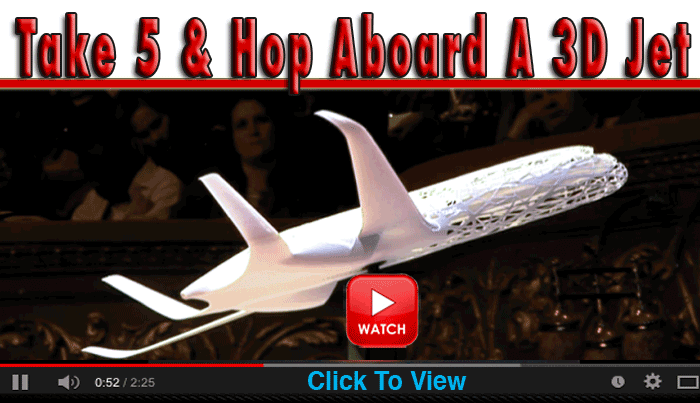 By now you may have seen pieces of this
presentation, but here
in less than 6 minutes is something completely different—we
think it really gets things moving for 2015.
By now you may have seen pieces of this
presentation, but here
in less than 6 minutes is something completely different—we
think it really gets things moving for 2015.
|
We have
long thought about technology as human invention devoid of humanity—we
create tools, but we rarely feel connected to those tools the way we
do with, say, pets, children, family, and friends.
The closest we have come in recent years
is perhaps with the Apple iPhone’s Siri feature, which talks back
to the user when asked a question.
A team at Airbus has been quietly working
on integrating travel technology with the people to whom it serves.
Technology is always moving forward, and travel technology is never
left behind when it comes to that momentum. In a recent TED Talks, Bastian
Schäfer of Airbus describes how visions of the future often “reveal
disruptive ideas…which break the chains of common thinking.”
His team at Airbus is interested in evolving a “more sustainable
future of aviation,” which means despite the inhuman mechanics
that would normally go into creating their envisioned 260-foot long
aircraft, it might be time to look at the human body to create a more
organic, responsive means of travel.
With that in mind, Schäfer and his
team created a 3D printed jumbo jet unlike anything you’ve seen
before. With a porous frame that intentionally mimics a mammalian skeleton,
the aircraft of the future will be windowless, offering passengers 360-degree
views of the outside world. Schäfer believes that by copying the
structure of human DNA using carbon nanotubes, substructures encoded
with information can be created and then used to build aircraft.
“The airplane of the future will
have its own consciousness,” Schäfer said. “It will
be more like a living organism than just a collection of very complex
technology.” Not only does this mean that airplanes will essentially
communicate with passengers and the environment via an inbuilt neural
network, but the edifice itself, inspired by nature, will inherently
be lighter—a huge step forward in reducing the carbon footprint
and saving money.
Schäfer wants us to imagine a plane
in which each individual seat adapts to each individual passenger, potentially
harvesting body heat as energy. Social areas would exist for virtual
reality gaming or business needs. The aircraft would be self-cleaning
and output antioxidant enriched air. No longer would we strain for a
view outside the tube through tiny porthole windows—a look in
any direction would afford sweeping views of the limitless landscape
thirty-nine thousand feet above the earth.
Next time you open a grimy seat table
to consume your bag of peanuts, in a seat that feels too small and too
hard, on a plane that smells a bit like an attic-imprisoned carpet on
a 100-degree day, think of Airbus’ vision of future air travel
and be thankful that for innovators, the future is always now.
FlyingTypers readers can watch
and marvel at Bastian Schäfer’s TED Talks here.
Flossie





